
 I fear Out Cold was made just because some Hollywood exec read an article about how “the kids dig snowboarding.” Even worse, I fear that somewhere, out there, one of those snowboarding kids thinks Out Cold is, like, “the funniest fuckin’ movie ever made, brah.”
I fear Out Cold was made just because some Hollywood exec read an article about how “the kids dig snowboarding.” Even worse, I fear that somewhere, out there, one of those snowboarding kids thinks Out Cold is, like, “the funniest fuckin’ movie ever made, brah.”
It’s certainly one of the stupidest, making Extreme Ops look like high art. Destroying the last shred of credibility he had left from Dazed and Confused, Jason London stars as ski resort worker in Alaska. He has a perpetually stoned look, a ridiculous soul patch (redundant) and a torch in his heart for some girl he balled on spring break. London and his friends — any of whom, Zach Galifianakis excepted, could be played by Ashton Kutcher — treat work like a playground and play pranks on each other, like salting up one passed-out guy’s penis so that he can awake to getting blown by a polar bear.
 Enter Six Million Dollar Man Lee Majors, now with a marquee value of about six cents (give or take). He’s the stereotypical evil rich guy who wants to buy the resort and turn it into a highly commercial tourist attraction. But the boys aren’t going to stand for that! No, they’re going to tell him off, destroy his property, shred powder, smoke weed, listen to Sum 41 and poop in a cup intended for a urine sample! Kids be so slammin’!
Enter Six Million Dollar Man Lee Majors, now with a marquee value of about six cents (give or take). He’s the stereotypical evil rich guy who wants to buy the resort and turn it into a highly commercial tourist attraction. But the boys aren’t going to stand for that! No, they’re going to tell him off, destroy his property, shred powder, smoke weed, listen to Sum 41 and poop in a cup intended for a urine sample! Kids be so slammin’!
I hated everyone in this movie, except maybe Playboy Playmate Victoria Silvstedt. Every ski movie must have a Playmate, but I ended up not liking her either, because she never gets naked. Why? This is a teen comedy set at a ski resort. Have we learned nothing from Hot Dog?
The best part of the movie is the footage during the end credits, where many cast members are shown wiping out violently in the snow. I hope many ribs and hips were fractured. —Rod Lott


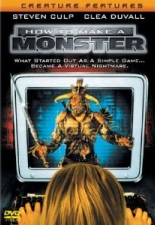
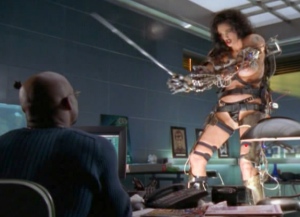 Deliberately cartoony, the movie makes no attempt at all to depict the authentic realities of game production, which wouldn’t be a problem if Huang hadn’t decided to rip himself off and use the film to re-tell the same story he told in his first and much, much, much better picture. By the time Monster ends with a newly jaded Clea DuVall (in the Frank Whaley role) schooling a new intern in the cold, cruel realities of the world, it becomes agonizingly clear that by his third film, Huang had already shot his entire creative wad, leaving him with nothing else to say.
Deliberately cartoony, the movie makes no attempt at all to depict the authentic realities of game production, which wouldn’t be a problem if Huang hadn’t decided to rip himself off and use the film to re-tell the same story he told in his first and much, much, much better picture. By the time Monster ends with a newly jaded Clea DuVall (in the Frank Whaley role) schooling a new intern in the cold, cruel realities of the world, it becomes agonizingly clear that by his third film, Huang had already shot his entire creative wad, leaving him with nothing else to say. 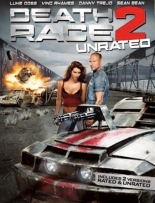
 How did that metal-masked Frankenstein become Frankenstein? Where’d he get that modified Ford Mustang? How did the high-octane event even start? Did they find Joan Allen through LinkedIn or something? Odds are, you weren’t even asking such things at the end of 2008’s
How did that metal-masked Frankenstein become Frankenstein? Where’d he get that modified Ford Mustang? How did the high-octane event even start? Did they find Joan Allen through LinkedIn or something? Odds are, you weren’t even asking such things at the end of 2008’s  She proposes “a race: wicked, epic,” which begets the Death Race we all know and love. One of its instant superstars is Terminal Island’s newest residents, Carl Lucas (Luke Goss of
She proposes “a race: wicked, epic,” which begets the Death Race we all know and love. One of its instant superstars is Terminal Island’s newest residents, Carl Lucas (Luke Goss of 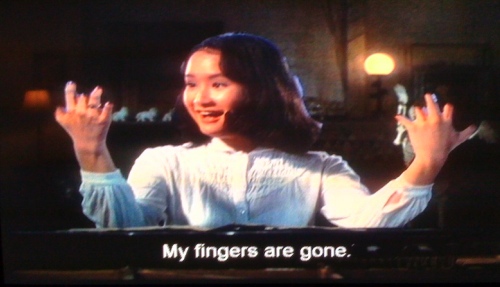

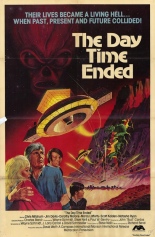
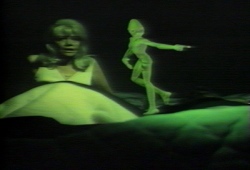 Then there’s a poorly matted spaceship that chases them through the house, and ultimately, as the title promises, time ends. Or rather, the family just gets warped into the future, on the outskirts of the city of tomorrow, and for some reason, this suits them just fine.
Then there’s a poorly matted spaceship that chases them through the house, and ultimately, as the title promises, time ends. Or rather, the family just gets warped into the future, on the outskirts of the city of tomorrow, and for some reason, this suits them just fine.